With more business operations moving to the cloud, the SaaS industry has exploded in recent years. SaaS allows companies to access software over the internet, rather than installing it locally. The SaaS market is expected to grow 28% YoY, with an expected value of $333.03 billion in 2023.
For SaaS companies catering to enterprise clients, search visibility is crucial for acquiring new customers at scale. Ranking high in search engines builds authority and trust for your brand. It also allows you to reach decision-makers actively looking for SaaS solutions online.
However, SEO for enterprise SaaS brings some unique challenges:
- Highly competitive keywords in the SaaS space
- Long, complex sales cycles for enterprise deals
- Difficulty targeting multiple personas in the buying cycle
- Appealing to both human readers and search bots
In this guide, we’ll share tips to master SEO specifically for driving enterprise SaaS growth. With the right strategy, you can build traffic, leads and sales on autopilot through search engine rankings.
Understanding Enterprise SaaS SEO
Enterprise SaaS SEO refers to optimizing for search visibility specifically for SaaS companies selling to other businesses (B2B). The goals are typically:
- Increasing visibility for your brand, products and services
- Driving more traffic to your site*
- Generating more leads and sales
- Building trust and authority around your SaaS
This differs from SEO for ecommerce companies, lead generation sites, or informational content sites. When optimizing for enterprise SaaS, you must appeal to multiple buyer personas in the B2B purchasing process.
Your content should attract C-level executives researching solutions, mid-level managers comparing vendors, and technologists who vet implementations. The personas have distinct needs across the buyer’s journey, which your SEO must address.
You’re also competing against established SaaS brands with large budgets. So your SEO must be highly targeted, with an emphasis on building authority over time.
Some core elements of an effective enterprise SaaS SEO strategy include:
- Competitor analysis – Study what other top SaaS companies are doing SEO-wise in your space
- Keyword research – Identify high-value search terms aligned with your products
- Technical SEO – Optimize site speed, responsiveness, indexing and more
- Content optimization – Create content that ranks for target keywords
- Link building – Build high authority backlinks from relevant sites
- Conversions – Optimize on-site elements like calls-to-action
Now let’s explore some of these components deeper.
Key Elements of Enterprise SaaS SEO
There are a few foundational elements that set the stage for SEO success in the enterprise SaaS space. Make sure you have these covered first:
Technical SEO

Like any website, your SaaS platform must follow technical SEO best practices. This includes:
- Fast load times – Page speed critically impacts SEO rankings. Optimize images, enable compression, and minimize HTTP requests.
- Mobile optimization – With over 55% of traffic coming from mobile, your site must be mobile-friendly. Use a responsive design.
- SSL Certificate – Switch to HTTPS for security and a ranking boost. Free SSL certificates are available from Let’s Encrypt.
- Optimized metadata – Craft compelling titles and descriptions for each page to click-through rates.
- Sitemap and robots.txt – Submit an XML sitemap and optimize your robots.txt file for easy crawling.
- Structured data – Use schema markup so search engines can understand your pages’ content.
Paying attention to these technical SEO factors ensures search engines can easily access, index, and understand your SaaS site’s content.
Content Strategy and Creation

High-quality content sets the foundation for your enterprise SaaS SEO. Some best practices here include:
- Keyword research – Identify high-value search terms your customers use around your SaaS solutions. Tools like Ahrefs, SEMrush and Moz are helpful.
- Topic clustering – Group keywords into topics and themes to create comprehensive content around each one.
- Optimized copy – Optimize on-page elements like titles, headers, meta descriptions and image alt text for target keywords.
- Unique value – Ensure your content provides value unique from competitors. Avoid duplicating existing content.
- Multimedia – Incorporate visuals like images, charts and videos to make your content more engaging.
- Calls to action – Each piece of content should move readers towards a specific goal, like requesting a demo.
- Promotion – Promote your new content across social channels, email newsletters, PPC ads etc.
When drafting SaaS content, adopt your buyer personas’ perspectives to create customer-focused copy. Avoid overly promotional language.
Link Building

Backlinks remain one of the strongest ranking signals for SEO. To build authoritative links:
- Identify sites ranking well for your target keywords and outreach for backlink opportunities.
- Build relationships with key people at SaaS media sites, industry analysts and reviewers. Offer guest posts or collateral they can link to
- Participate as thought leaders for panels, quotes and interviews that get published online.
- Publish and distribute gated assets like ebooks and templates to get links in exchange for downloads.
- Write and pitch high-quality guest posts to SaaS blogs and publications. Avoid low-quality directories.
- Promote your best content on social media platforms like LinkedIn and Twitter to garner links.
Diversify your backlink profile with a blend of contextual editorial links from authoritative domains.
Competitive Analysis
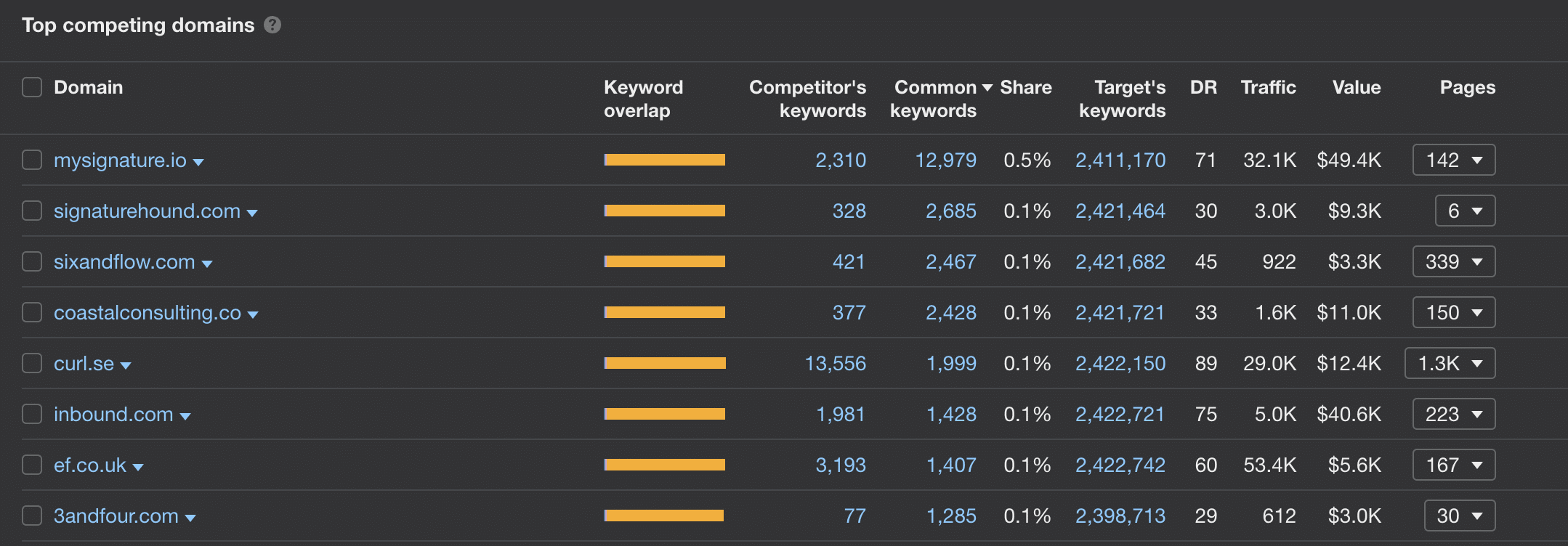
Before diving into specific tactics, it’s smart to analyze competitors ranking well in your space. Study their:
- Keyword rankings – Which keywords do they rank for? How do they optimize content for those terms?
- Content – What kinds of content are they publishing? Does it attract backlinks?
- Backlink profile – What sites link to their website? How did they get those high authority links?
- Technical optimization – Is their site fast, mobile-friendly and technically optimized?
- Social presence – How engaged are their social profiles? Does it bring referral traffic?
Reverse-engineering what’s working for the top players in your industry provides insights into what you should be trying in your own SEO and content efforts.
You can use tools like Ahrefs, SEMrush and Moz to research competitors as well.
On-Page SEO for Enterprise SaaS
Now let’s get into specific on-page optimization techniques for SaaS sites.
Keyword Research
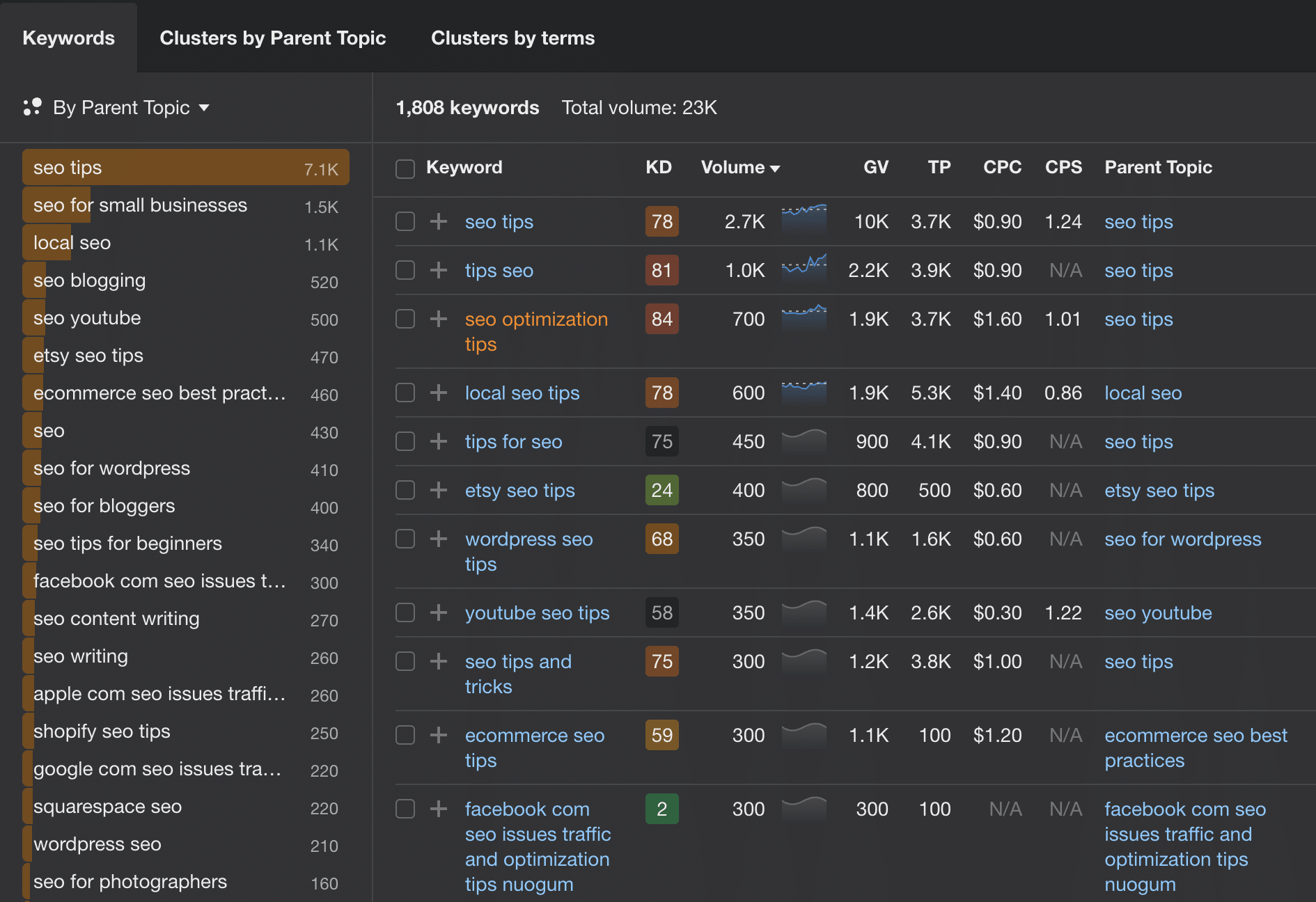
Thorough keyword research is the foundation of an effective on-page SEO strategy.
Identify keywords your customers are searching for by:
- Leveraging keyword research tools like Google Keyword Planner and Ahrefs. Look for high volume keywords with low competition.
- Analyzing the content and keywords of top-ranking competitor pages.
- Exploring related keywords and long-tail variations of core terms.
- Leveraging Google Autocomplete and search trends data.
- Surveying customers directly about the keyphrases they use.
Organize keywords into relevant topics and themes when researching. This helps develop content topics around semantically related keywords.
Optimized Page Content
Once you’ve identified target keywords, it’s time to optimize your on-page content:
- Include keywords in headings (H2, H3 tags, etc), highlighting their relevance. But avoid overuse.
- Craft unique, compelling page titles and descriptions that include target keywords.
- Use keywords naturally in the page content itself. Aim for a keyword density of 1-3%.
- Include keyword variations and synonyms in moderation to expand relevancy.
- Add related keywords in image file names and ALT text attributes.
- Include keywords in file names for downloadable assets linked from pages.
The goal is for search engines to easily understand your content’s topic by reading your optimized page copy. But stay natural – avoid awkward stuffing.
Meta Information
Optimized meta tags enhance how your pages appear in search results. Make sure each page has:
- Unique title tags – Include your target keyword and key page benefits. Keep under 60 characters.
- Meta descriptions – Provide a compelling paragraph summary of the content. Use keywords naturally and entice clicks.
- Social sharing meta data – Open Graph and Twitter Card metadata improves how content appears when shared on social media.
Media Elements
Videos, images and other media enhance engagement on your pages. For SEO:
- Choose descriptive file names with target keywords for images, videos and documents.
- Write compelling ALT text for images that includes main page keywords.
- Embed videos from YouTube and use its transcript feature for captions.
Include visuals to illustrate complex topics and improve content quality.
Technical SEO for Enterprise SaaS
Now let’s look at some technical SEO factors specifically relevant for SaaS sites.
Site Speed Optimization
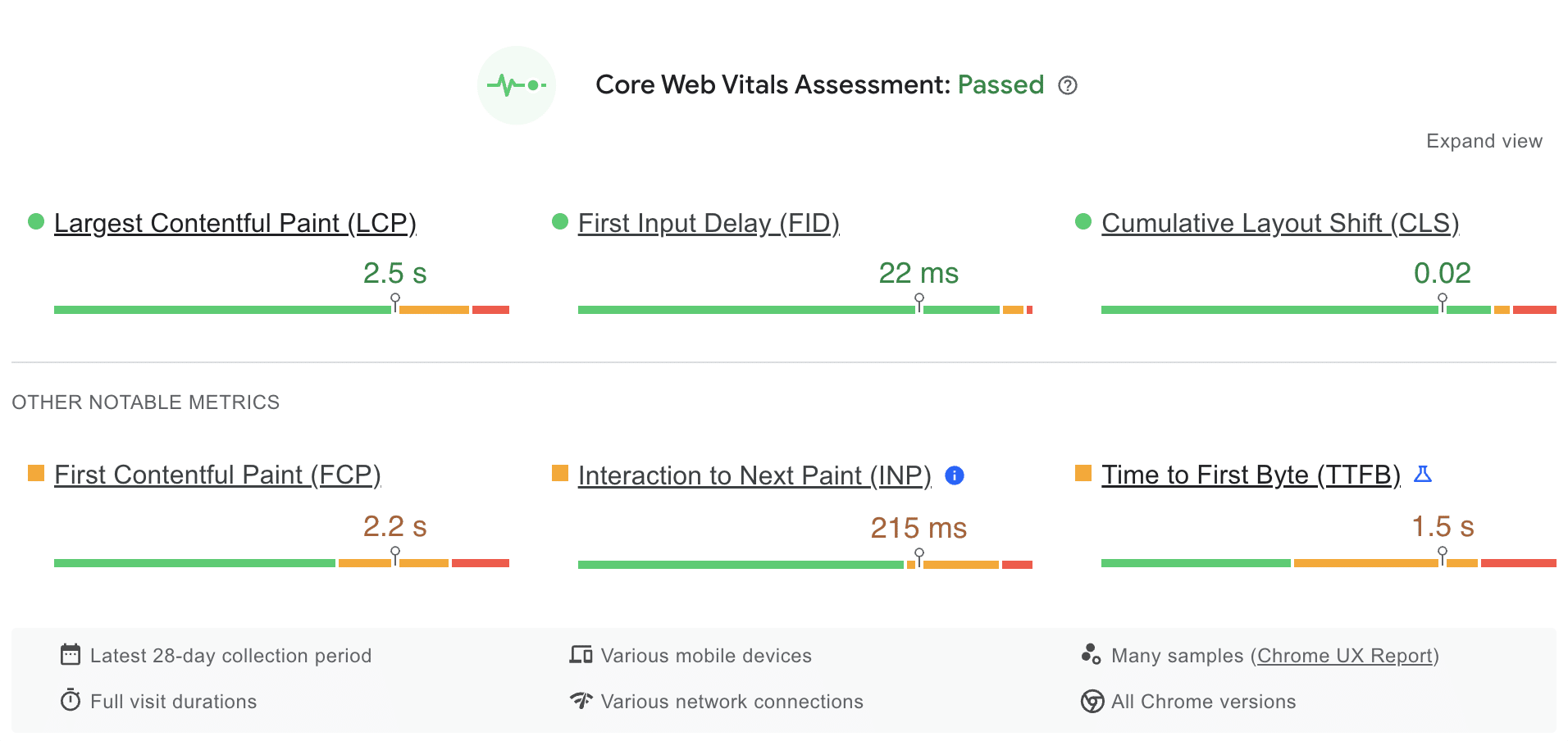
Page load speed significantly impacts conversions, engagement and SEO. Here are some tips for SaaS sites:
- Enable compression, browser caching and a CDN to reduce file sizes.
- Defer non-critical CSS and JavaScript rendering with tools like Async CSS.
- Load scripts at the end of the pagebody to prioritize content first.
- Optimize image sizes and compression settings.
- Minimize HTTP requests and eliminate unnecessary widgets/trackers.
- Consider AMP or PWA mobile experiences for accelerated speeds.
Test site speed regularly with PageSpeed Insights and GTmetrix to catch bottlenecks. Faster pages improve user experience and SEO strength.
Mobile Optimization
With many users accessing SaaS dashboards and apps on the go, mobile optimization is crucial.
- Implement a responsive design so the site adapts smoothly across devices.
- Size tap targets appropriately for fat finger usage.
- Adapt menus and navigation for smaller screens.
- Ensure pages pass the mobile-friendliness test.
- Optimize mobile page speed with compressed images, minimal scripts etc.
Structured Data Markup
Adding structured data provides search engines with machine-readable context about your pages. Useful schemas for SaaS sites include:
- Organization schema for your SaaS company profile.
- SoftwareApplication schema for product pages.
- BreadcrumbList markup for site architecture context.
- BlogPosting schema for articles.
- FAQPage schema for support content.
Test structured data with Google’s Structured Data Testing Tool.
Content Strategy for Enterprise SaaS SEO
We’ve established that premium content is the cornerstone of SaaS SEO. Now let’s outline some proven formats that work.
SaaS Product Pages
Product pages need to cater to multiple buyer personas. Include:
- High-level positioning for executives
- Use cases and benefits for managers
- Technical feature overview for IT teams
- Integrations, security and compliance details for technicians
- Pricing and payment options
- Clear call-to-action to sign up for a trial
Optimize each section using targeted keywords for maximum visibility.
SaaS Blog Content
Blogs build awareness and demonstrate your SaaS expertise. Ideal topics include:
- Thought leadership – Discuss industry trends and share unique insights.
- How To guides – Tutorials for using your SaaS product. Include visuals and video.
- List posts – Ranking guides/comparisons and compilations of tips.
- Case studies – Customer success stories humanize your brand.
- Interviews – Q&As with customers or experts provide value.
- Newsjacking – Commentary on current events that align with your brand.
Promote blog posts through social media, email newsletters and outreach to drive engagement. Link internally between related posts to pass authority. Guest blogging also expands your audience reach.
Gated Content Assets
Develop premium gated assets behind an email capture form. These build your subscriber list while attracting backlinks, shares and engagement. Consider:
- Ebooks, guides and whitepapers with in-depth analysis
- Templates, checklists or cheat sheets
- Research reports, surveys and case studies
- Webinars, online events and video content
Promote gated assets and send to relevant sites for backlinks. They provide great content upgrades for email nurturing as well.
Link Building and Outreach
Now we’ve created amazing content – but how do we get authoritative sites to link to it? Here are some of the top link building tactics for SaaS companies:
Guest Blogging
One of the top sources of authoritative, editorial backlinks. Identify and pitch relevant SaaS and industry blogs to contribute posts. Stick to reputable, established sites rather than spammy directories.
Link back to your site where relevant. But keep the post focused on providing genuine value for their audience.
Link Insertion Outreach
Find pages ranking well for your target keywords and look for opportunities to reference your content as a useful resource for readers. Reach out politely to site owners to request adding your link.
Focus on placing links contextually where the mention of your content adds value. Avoid spammy paid links.
Interviews / Panel Discussions
Position your executives and product leaders as experts for relevant interviews, panels and podcast appearances. The published piece becomes a great owned media asset you can link to.
Sponsorships
Sponsoring and attending SaaS and industry events gets your brand in front of influencers. See if organizers will link to your site from the event page.
Linkable Asset Promotion
Promote your best content, guides, ebooks and templates on platforms like Reddit, Quora, and LinkedIn. Quality comments can lead to visitors and links.
Measuring Success of Enterprise SaaS SEO
SEO is an ongoing process, so you need to track the right metrics to measure success. Some key KPIs include:
- Organic traffic – Overall volume of visits from organic search. Track month-over-month trends using Google Analytics.
- Keyword rankings – Track your target keyword rankings in Google. Use tools like SEMRush, Moz and Ahrefs to monitor position.
- Traffic from target keywords – See how much traffic is coming from your core target keywords using Google Search Console.
- Goal completions from organic traffic – Monitor signups, demos and other conversions from organic visits. Measure the ROI of SEO.
- Content engagement – Track social shares, links, comments and downloads for content. This helps determine what resonates.
- Backlinks – Keep an eye on total backlinks from unique referring domains using Ahrefs and Moz.
Regularly analyze and report on these metrics to inform your SEO and content strategy.
Real-World Success Stories
Let’s look at a few enterprise SaaS companies dominating SEO in their space:
HubSpot
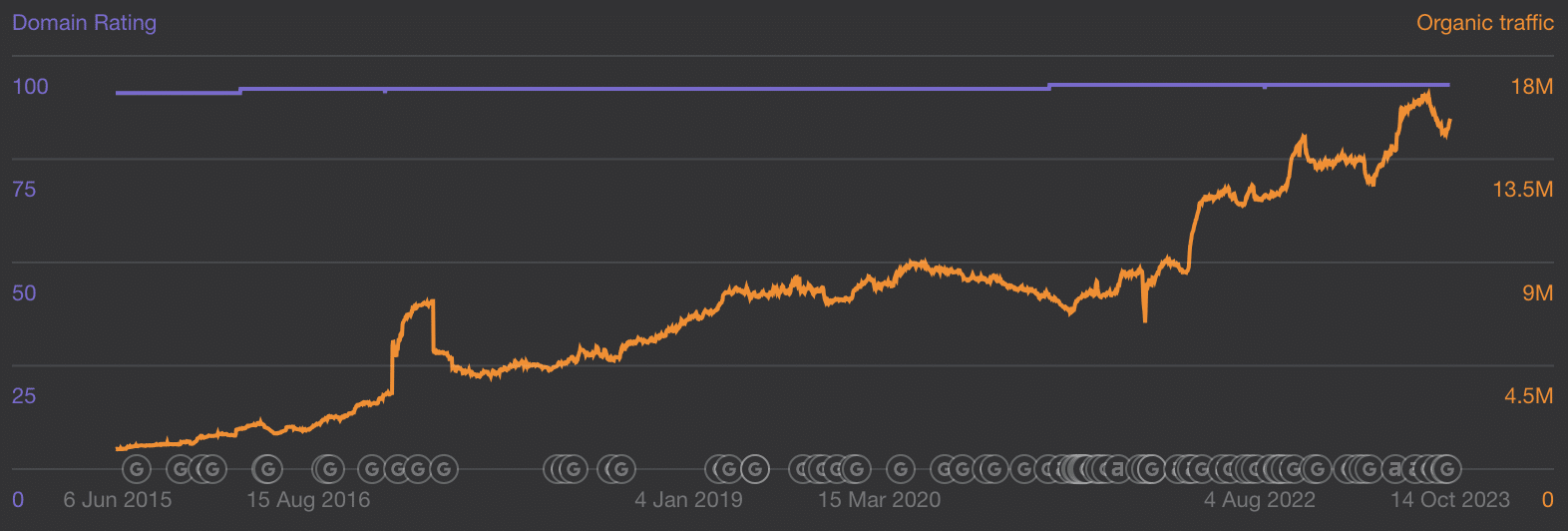
The inbound marketing and sales CRM tool is renowned for blogging and SEO. Their website receives over 15 million monthly visits, and ranks for 3.5 million+ keywords.
Hubspot creates pillar content around topics like email marketing and SEO. Their content strategy combines educational articles, templates and visual assets.
Zendesk
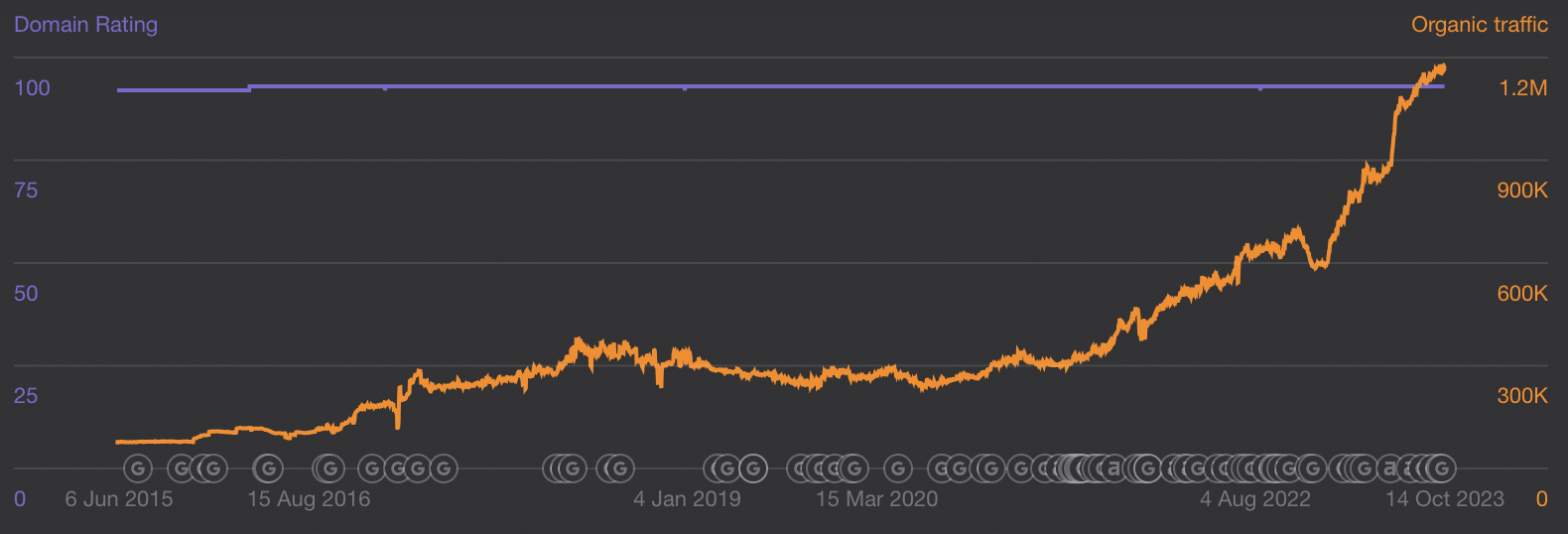
The customer service software ranks well for competitive keywords like “help desk software” and “customer support”. Zendesk creates comprehensive content like buyer’s guides and detailed product pages. Their focus on ranking highly for commercial keywords drives enterprise leads and sales.
Zendesk receives over 1 million organic traffic and ranks for 350k+ keywords.
These real-world examples showcase the power of strategic SEO and content for long-term SaaS growth.
Common Mistakes to Avoid
While optimizing your enterprise SaaS SEO, be sure to avoid these common pitfalls:
- Focusing only on short-tail keywords and ignoring long-tail traffic.
- Overusing keywords unnaturally on your pages.
- Having thin content pages without enough depth to rank well.
- Not having a content promotion strategy.
- Buying links or publishing low-quality guest posts. Google penalizes unnatural links.
- Only optimizing for one persona. Tailor content for different roles in the buyer’s journey.
- Not tracking goal completions and conversions from organic traffic.
- Ignoring technical SEO factors like site speed and mobile optimization.
- Using duplicate or repurposed content across pages. Make each page 100% unique.
- Having an inconsistent content schedule. Regular new content keeps you ranking well.
- Not replying to comments and social mentions. Engage with your audience.
By avoiding these missteps, you can build an effective, long-term enterprise SaaS SEO strategy.
Wrapping Up
Optimizing SEO for enterprise SaaS companies comes with unique opportunities and challenges. You must appeal to multiple complex personas while competing against other established brands.
But by leveraging targeted keyword research, high-quality content, and authoritative backlinks, it’s possible to build traction and recognition. Use this post’s strategies to improve your enterprise SaaS SEO results going forward.
Consistent execution on foundational technical and on-page factors, along with promotion, outreach and conversions will compound gains over time. Measure using relevant KPIs to inform strategy adjustments.
With the right approach, your SaaS business can become a recognized market leader, acquiring customers through search engine visibility and targeted content marketing.

